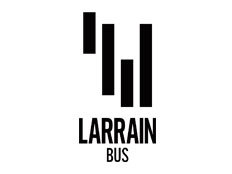EY refers to the Digital wallet world organization, and may refer to a number of, of the member corporations of Ernst & Younger International Limited, every of which is a separate authorized entity. Ernst & Young International Limited, a UK firm limited by guarantee, does not provide services to shoppers. The EU’s AML legislative bundle aims to harmonize the battle towards money laundering and terrorism financing throughout Europe. It establishes a centralized supervisor, the Anti-Money Laundering Authority (AMLA), to enforce constant utility of the principles, and foster a culture of compliance that transcends borders. As set out above, the AMLR lays down definitions concerning helpful ownership for a variety of entities and structural preparations, that are referred to in the AMLD6. It also details how obliged entities should establish the beneficial house owners of those entities and preparations, in addition to obligations to record such data and to share it with the central register.
In addition, at this stage, statistical reports are generated that shall be used sooner or later as part of repeated AML danger assessments to check all of the upsets which have occurred before with the risks which are presently occurring. This will assist to grasp the sample of occurrence of such dangers and improve the methods of coping with them due to the out there data describing their characteristics, similarities, and variations. In addition to the practice-wide risk evaluation, you need to perform a risk evaluation at shopper stage and matter degree https://www.xcritical.com/. This will inform the best way during which you conduct your customer due diligence and ongoing monitoring. A successful AML threat evaluation process should be adaptable to adjustments in the regulatory landscape, trade tendencies, and emerging threats. Effectively measuring the success of your AML risk evaluation is important to hold up a strong and compliant anti-money laundering program.

Staying Forward Of The Game: Aml Regulatory Necessities For Anti-financial Crime Professionals
- AML regulations require companies to implement insurance policies, procedures, and controls to detect and stop suspicious actions.
- Companies should use in-house or external third-party regtech options to streamline compliance, enhance risk detection, and scale back handbook oversight burdens.
- By adopting a risk-based approach, institutions can higher allocate assets, improve compliance efforts, and successfully handle AML risks.
- AML threat evaluation is a scientific process that permits organizations to identify, evaluate, and prioritize potential money laundering and terrorist financing dangers.
This is a half of FATF’s programme of labor to handle the unintended consequences of AML/CFT measures. Whether Or Not you’re a fee-earner or a MLRO, recognising indicators of potential cash laundering sign is an ongoing problem. All paperwork about your shopper and matter danger evaluation could be stored with your commonplace type and stored in a central paper folder or electronic folder. This is separate from the requirements to nominate a nominated officer – also identified as a money laundering reporting officer (MLRO) – and a compliance officer for authorized practice (COLP).
On high of this, try to anticipate how the enterprise could be subjected to – and even responsible of – money laundering by studying information stories of organizational approaches to money laundering. The below table reveals two core examples by which an AML risk evaluation is a requirement, and two different examples where it’s simply elective. Whether Or Not your group might be required to hold out an AML risk assessment hinges on whether or not you are in an trade and a jurisdiction where you would face penalties for refusing to do such an assessment. Be Part Of lots of of businesses that efficiently integrated iDenfy in their processes and saved money on failed verifications. Be Taught extra about other ways of automating your AML danger evaluation, or get started immediately. It is dependent upon the nation, nevertheless, there are a number of standards that work like a unified AML method globally.
While you implement stringent AML controls, risk-based method and streamlined program, it’s important to bear in mind of frequent AML risk assessment examples to determine, track, and fight emerging monetary threats considerably. By ensuring you integrate your AML threat assessment into on a regular basis practices, you can strengthen your anti-money laundering efforts and shield your corporation from illicit monetary activities. Your threat assessment doesn’t essentially must be advanced, particularly if you’re a small enterprise, nevertheless make positive you determine the risks you see in your corporation, and keep in mind this isn’t merely a ‘tick box’ train. It can’t be a generic doc, it should involve a deep dive into understanding your customer base, the nature of the transactions, and the overall operational surroundings of your corporation. When you run your cash laundering danger evaluation mannequin, you shall be able to find out a danger rating and danger vary in your shoppers, judging if they’re low, medium or high threat for money laundering. Taking this risk-based method helps you nurture business relationships with authorized purchasers and lower your overall danger of violating AML laws.
Position Of Regulatory Bodies In Aml Compliance
When suspicious activities are recognized, companies are liable for reporting these transactions to the appropriate regulatory authorities. Well Timed and correct reporting plays a vital function in combating monetary crimes and guaranteeing compliance with AML rules. An effective AML risk evaluation framework comprises several important elements that work in synergy to establish and mitigate money laundering and terrorist financing risks. These components are important for organizations looking to set up a robust AML program that aligns with regulatory requirements and trade best practices.
Agents the agency makes use of for AML compliance or for the issues identified in regulation 24(2)(b) now additionally fall within the coaching requirements. If you’re an skilled small practice, where senior folks have an excellent understanding of all of the firm’s clients and issues, you might decide that this internal management is not essential. This guide seems on the Cash Laundering, Terrorist Financing and Switch of Funds (Information on the Payer) Regulations 2017 from the angle of small firms and shares recommendations on efficient compliance. Participate in industry boards, attend related conferences, and collaborate with friends to trade best practices and insights. Provide regular coaching for employees to make sure they’re up-to-date on the newest AML strategies and developments. If you want to understand how these modifications impact your organisation or need steering on making ready for AMLA compliance, our specialists are ready to assist you.

The Worldwide Financial Fund (IMF) plays a big function within the development and implementation of the AML/CFT (Combating the Financing of Terrorism) danger assessment methodology. This methodology offers a scientific method to identify, assess, and understand the money laundering and terrorism financing dangers confronted by international locations (IMF). Adhering to these best practices helps organizations improve their danger assessment capabilities and guarantee compliance with regulatory requirements. To successfully conduct an AML danger assessment, organizations can leverage know-how options that supply advanced analytics and risk evaluation capabilities. These options automate the evaluation of customer behavior and transaction patterns, facilitating a complete risk-based strategy aligned with regulatory standards. In Europe, AML rules are governed by various directives and regulations, together with the Sixth Anti-Money Laundering Directive (6AMLD).
A risk-based method to AML allows organizations to allocate assets efficiently and give attention to areas with the best money laundering and terrorist financing risks. This approach includes identifying inherent risks, assessing the effectiveness of current controls, determining residual risks, and prioritizing mitigation measures. For instance, new forms of financial crime could emerge, or criminals may find new methods to exploit current systems. Subsequently, by regularly reviewing and updating their risk assessments, businesses can guarantee they continue to be effective in combating money laundering and terrorist financing. Banks structure their BSA/AML compliance programs to be risk-based, with the purpose to help in identifying money laundering (ML), terrorist financing (TF), and different illicit monetary exercise risks.
A mid-tier payments startup with a risk staff of approximately 60 workers across fraud and AML applied a FRoML method by integrating fraud and AML detection into a single platform with a universal interface and case administration capabilities. The firm described this shift as a “game changer”, allowing it to seamlessly reassign analysts between fraud and transaction monitoring alerts with minimal disruption. To begin with, monetary criminals have gotten extra refined, whether it’s these defrauding people or institutions, or those further downstream who legitimize the ill-gotten features. And this is making the detection and prevention of fraud and different financial crimes ever extra advanced with the necessity for highly personalized and focused approaches for each crime. Anti-bribery and corruption companies EY Anti-Bribery and Corruption (ABC) services guide shoppers via the complexities of compliance. EY Enterprise Integrity & Corporate Compliance Methodology helps organizations build robust governance, streamline workflows, and improve strategic threat administration by way of automation.
His professional journey includes a notable stint at Clever (formerly TransferWise), where he played a key function in increasing the model’s footprint throughout the European market. At Present, Mo is shaping the imaginative and prescient aml risk assessment of Binderr, focusing on simplifying compliance for regulated corporations, particularly within the finance, crypto, iGaming, and betting sectors, guaranteeing they meet regulatory requirements effectively and successfully. By integrating AI-driven automation, institutions can strengthen their risk-based approach in banking, streamline compliance workflows, and enhance efficiency in detecting financial crime. Once risks are recognized, establishments score dangers as low, medium, or excessive, analyzing transaction behaviours, business actions, and regulatory requirements set by FATF, EU directives, and FinCEN.

Common reviews of danger assessments permit organizations to establish emerging risks, modify their control measures, and stay ahead of potential vulnerabilities. Monitoring and reviewing residual risks are important for sustaining a strong AML threat evaluation program. Continuous assessment of those measures’ effectiveness and making needed changes ensures that the compliance program stays present and aware of the altering panorama of financial crime. These indicators include buyer profiles, geographic locations, and the kinds of products and services supplied by a enterprise.
This information is then used to set initial risk scores, which are frequently refined utilizing AI-driven tools that account for varied factors. As a result, any adjustments in customer behaviour or exterior situations immediate an immediate update in danger assessments. This dynamic mechanism not only enhances the precision of risk assessments but also ensures that financial establishments can react swiftly to rising threats, thereby sustaining a sturdy AML compliance framework. The interaction between KYC, CDD, and EDD in the Risk Based Mostly Strategy ensures that institutions can optimize assets, focusing on high-risk areas while streamlining processes for low-risk clients. KYC is the foundational process of verifying customer identities and understanding their enterprise actions, forming the idea for danger evaluation in the RBA. KYC verification entails gathering information corresponding to name, address, date of birth, and anticipated transaction patterns.
